Product
Sodium Stearate Price Trend and Forecast
Sodium Stearate Price Trend and Forecast
Sodium Stearate Regional Price Overview
Get the latest insights on price movement and trend analysis of Sodium Stearate in different regions across the world (Asia, Europe, North America, Latin America, and the Middle East & Africa).
Sodium Stearate Price Trend for Q2 of 2025
Asia
In Asia, the price trend for Sodium Stearate during Q2’25 remained largely on a downward path. This was mainly due to declining feedstock stearic acid prices, which fell consistently across the region, especially in South Korea. The lower prices were driven by abundant palm oil supply from Southeast Asia, weak upstream costs, and falling crude oil prices.
Sodium Stearate Price Chart
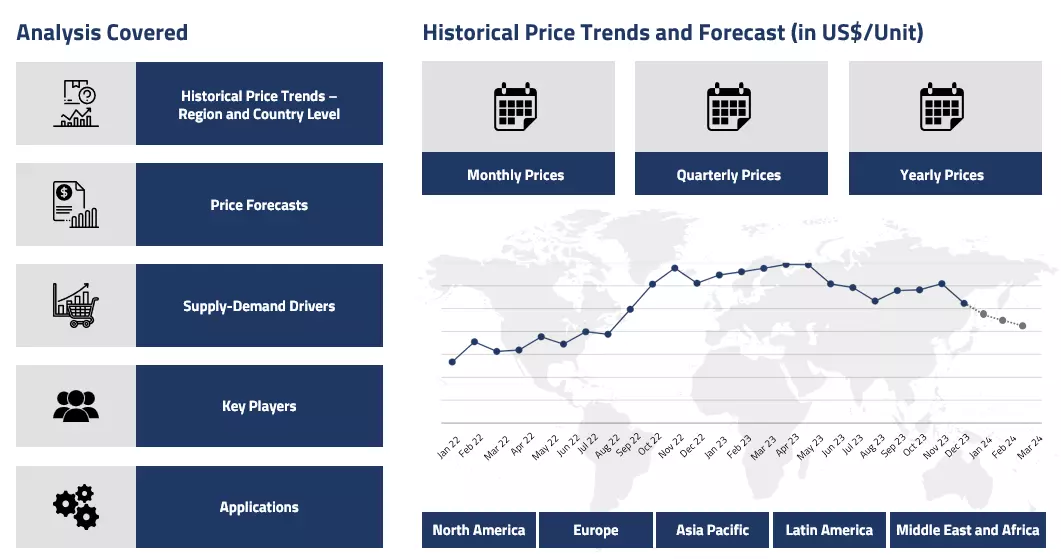
Please Login or Subscribe to Access the Sodium Stearate Price Chart Data
Although there was a slight recovery in the rubber and automotive industries early in the quarter, this momentum did not last. A major fire at a tire plant and continued sluggish vehicle sales curbed demand. Furthermore, despite higher freight costs towards the end of the quarter, the overall market remained oversupplied due to steady imports and high inventories, which put additional pressure on prices.
Europe
The European market for Sodium Stearate followed a bearish trend through Q2’25. Weak demand from key end-user industries like rubber processing and automotive manufacturing, coupled with an influx of cheaper imports from Southeast Asia, weighed heavily on prices. The Netherlands, a major trade hub, saw high stock levels due to persistent import inflows.
Despite some logistical bottlenecks at key ports, the availability of material remained unaffected. Falling palm oil prices kept production costs down, which helped suppliers remain flexible with pricing. However, the lack of fresh demand and cautious buying behaviour among downstream customers continued to drag the market down.
North America
In North America, Sodium Stearate prices dropped throughout Q2’25, mirroring the trend in stearic acid. Ample domestic supply, soft downstream demand, and subdued vehicle production led to a bearish market environment. Automotive and tire industries, which are major consumers, reduced operations due to plant shutdowns and a decline in U.S. car sales.
Although there were minor freight cost increases in June, these were not enough to shift the cost advantage for buyers, especially with lower palm oil input prices from Asia. Suppliers focused on clearing inventories, which further added to the downward price pressure.
Analyst Insight
According to Procurement Resource, Sodium Stearate prices are expected to remain stable/soft across regions unless demand strengthens or supply becomes disrupted.
Sodium Stearate Price Trend for Q1 of 2025
Asia
The Sodium Stearate price trend in the Chinese market closely followed fluctuations in upstream palm oil, its primary feedstock. At the start of the quarter, prices briefly declined due to weakness in the upstream market. However, as the quarter progressed, prices rose during the Lunar New Year celebrations. Strong export demand in the international palm oil market, coupled with improved supply, drove prices positively.
With rising domestic futures and increasing upstream costs, producers adjusted their offers accordingly. This upward momentum lasted for a brief period before the market entered a more stable phase. Towards the end of the quarter, prices eased as feedstock costs declined and end-user consumption weakened. By the quarter’s close, Sodium Stearate prices remained higher than at the beginning but lower than their peak.
In India, a similar trend unfolded during the said period. The quarter started with a price decline due to weaker palm oil imports and sluggish demand. Local sellers adjusted prices downward, keeping the market under pressure for some time. However, as global palm oil prices began to rise, Indian producers responded by increasing prices in line with higher input costs and tightening supply. This price rise was followed by a slight correction towards the end of the quarter.
Europe
In Europe, Sodium Stearate prices mirrored trends in the Chinese market during the first quarter of 2025. Prices started on a softer note due to lower raw material costs and cautious buyer sentiment. As palm oil prices increased globally, European suppliers raised prices to account for higher input costs. The latter half of the quarter remained relatively stable, with consistent purchasing activity and no significant supply disruptions. While there were no dramatic fluctuations, the overall trend was clear—prices declined at the beginning, rose mid-quarter, and remained range-bound toward the quarter’s close.
North America
The North American market followed a similar trajectory to its global counterparts during the first quarter of 2024. Prices edged downward in the early weeks due to subdued demand and lower feedstock costs. As global palm oil prices rebounded, Sodium Stearate prices in the region followed suit. Traders adjusted their offers in response to increased production costs and stronger demand. However, the market softened again toward the end of the quarter, reflecting a stabilization in global pricing trends.
Analyst Insight
According to Procurement Resource, Sodium Stearate prices are expected to remain range-bound in the near future, as feedstock supply is anticipated to stay stable.
Sodium Stearate Price Trend for the Year 2024
Asia
Sodium Stearate prices in the Asian market exhibited a fluctuating trend with two distinct peaks throughout the year. At the beginning of the year, prices remained stable, oscillating within a narrow range. As the months progressed, prices surged due to global shipping disruptions that constrained supply chains and increased feedstock costs. However, by the third quarter, as the previously rising upstream market stabilized, Sodium Stearate prices followed suit.
In the final quarter, prices increased again as raw material costs rose due to strong export demand and tighter supply from producing countries. Prices peaked during this period before softening slightly toward the year’s end. Overall, the Sodium Stearate price trend closely followed movements in the palm oil market, which remained a dominant cost driver throughout the year.
Europe
In Europe, the Sodium Stearate price curve followed a similar trajectory to that of Asia in 2024. Prices firmed at the beginning of the year as production and transportation costs remained high. Throughout much of the year, demand was steady, keeping prices within a relatively narrow range. However, disruptions in the Red Sea led to rising freight rates, which in turn increased production costs, causing a notable surge in Sodium Stearate prices. As the upstream market stabilized, prices declined and remained steady by the third quarter. However, in the final quarter, prices rose again in response to increasing production costs amid an uptick in the upstream market. By the end of the year, as supply chains stabilized, prices began to ease.
North America
The North American pricing curve was more stable compared to those of Asia and Europe. The year began with a mild price increase as some global cost pressures influenced the market, though the impact was gradual. Throughout the year, prices remained relatively stable, supported by consistent demand and minimal supply disruptions. In the final quarter, prices increased in line with upstream trends, driven by tighter supply and limited availability. However, by the year’s end, prices had begun to ease again. While palm oil prices influenced the market, their impact was more gradual and steadier across the region.
Analyst Insight
According to Procurement Resource, Sodium Stearate prices are expected to stabilize in the near future following the recent surge, as palm oil prices are anticipated to normalize.
Sodium Stearate Price Trend for the Second Half of 2023 Asia
During the latter half of 2023, Sodium Stearate prices in Asia exhibited notable fluctuations, largely influenced by movements in feedstock prices. At the start of this period, prices remained within a limited range, with temporary spikes caused by supply chain disruptions due to adverse weather conditions. Subsequently, prices declined as palm oil output increased and stock levels strengthened, reducing manufacturers' input costs. However, towards the end of the year, prices rose again due to concerns surrounding El Niño, which created uncertainty about future palm-based supply. The overall trend was shaped by shifts in the palm oil market, which significantly impacted Sodium Stearate production costs.
Europe
In Europe, the Sodium Stearate price curve followed a similar pattern to that of Asian markets, experiencing fluctuations with a downward bias. Early in the period, prices remained stable, supported by steady downstream demand and precautionary buying. As raw material prices eased midway through the cycle, Sodium Stearate prices followed suit, with buyers capitalizing on the softer market outlook. However, as concerns grew over El Niño’s potential impact on Southeast Asian agriculture and palm oil supply, prices began to rise again. The market remained balanced, but stakeholders closely monitored developments in major producing nations. As in Asia, Sodium Stearate prices in Europe were closely linked to changes in palm oil availability and future supply expectations.
North America
The Sodium Stearate price trend in North America closely mirrored global patterns, particularly those observed in China. Prices remained stable at the beginning of the period, with local supply and demand relatively balanced and no significant disruptions. However, prices declined midway through as global feedstock costs eased, providing some cost relief for buyers.
Towards the end of the year, the trend reversed as concerns over lower overseas production, particularly in palm-producing regions affected by drought, pushed prices higher. These adjustments were modest, and the market remained relatively steady, though the influence of feedstock costs was evident. Overall, price movements were contained within a narrow range, primarily shaped by international trends.
Analyst Insight
According to Procurement Resource, Sodium Stearate prices are expected to rise in the coming months due to anticipated tighter feedstock availability and increasing production costs.
Sodium Stearate Price Trend for the First Half of 2023
Asia
In the first quarter of 2023, the prices of sodium stearate stumbled due to the downfall of the palm oil market. During the first half of Q1, the market sentiments were majorly affected by the reduction in export tax on palm oil by Indonesia. The dynamics did not improve in the second quarter, too.
There was a slight incline during the initial phase as the demand inclined with the help of the festival season. But the consumption in the domestic markets soon fell; further, the production activities far exceeded the existing demand, hampering the price trend of sodium stearate.
Europe
The prices of sodium stearate in the first quarter of 2023 declined as consumers did not show any interest in the sector. The weak demand was met with the high supply rates, which increased the gap between supply and demand, which had an adverse effect on the price trend of sodium stearate.
In the second quarter, the traders had to reduce their profit margins amid consistently falling prices of sodium stearate. In addition to this, the surge in imports and challenging climatic conditions ultimately led to the fall in the prices of sodium stearate.
North America
The downstream industries witnessed volatility as the imports from Indonesia remained uncertain in the first quarter of 2023, which affected the price trend negatively. In the second quarter, however, the prices revived as the export ban on palm oil from Indonesia led to a fall in the level of availability of feedstock materials in the region. The domestic and international traders looked forward to stocking up amid conditions of shortage of raw materials, which supported the rise in the prices of sodium stearate.
Analyst Insight
According to Procurement Resource, the price trend of Sodium stearate is expected to trace a downward journey in view of the weak condition of the feedstock market.
Procurement Resource provides latest prices of Sodium Stearate. Each price database is tied to a user-friendly graphing tool dating back to 2014, which provides a range of functionalities: configuration of price series over user defined time period; comparison of product movements across countries; customisation of price currencies and unit; extraction of price data as excel files to be used offline.
About Sodium Stearate
Sodium stearate is a salt of stearic acid which acts as an amphiphilic compound. It is also used as an emulsifier, foaming agent, and thickening substance and thus is extensively used in the soaps, cosmetics, and personal care industries. In addition to this, because of its ability to reduce surface tension and interact with both water and oil, it is a useful industrial compound.
Sodium Stearate Product Details
| Report Features | Details |
| Product Name | Sodium stearate |
| Chemical formula | C18H35NaO2 |
| Industrial Uses | Soap Manufacturing, Fireworks, Construction materials, Metallurgy, Textile, Plastic and rubber |
| CAS Number | 822-16-2 |
| Molecular weight | 306.46 g/mol |
| HS Code | 2915 |
| Supplier Database | Kao Corporation, Lumega Industries, N&M Specialty Chemicals, Norac Additives, Sovereign Chemicals, Spectrum Chemical Manufacturing Corp, Tokyo Chemical Industry |
| Region/Countries Covered | Asia Pacific: China, India, Indonesia, Pakistan, Bangladesh, Japan, Philippines, Vietnam, Iran, Thailand, South Korea, Iraq, Saudi Arabia, Malaysia, Nepal, Taiwan, Sri Lanka, UAE, Israel, Hongkong, Singapore, Oman, Kuwait, Qatar, Australia, and New Zealand Europe: Germany, France, United Kingdom, Italy, Spain, Russia, Turkey, Netherlands, Poland, Sweden, Belgium, Austria, Ireland Switzerland, Norway, Denmark, Romania, Finland, Czech Republic, Portugal and Greece North America: United States and Canada Latin America: Brazil, Mexico, Argentina, Columbia, Chile, Ecuador, and Peru Africa: South Africa, Nigeria, Egypt, Algeria, Morocco |
| Currency | US$ (Data can also be provided in local currency) |
| Supplier Database Availability | Yes |
| Customization Scope | The report can be customized as per the requirements of the customer |
| Post-Sale Analyst Support | 360-degree analyst support after report delivery |
Note: Our supplier search experts can assist your procurement teams in compiling and validating a list of suppliers indicating they have products, services, and capabilities that meet your company's needs.
Sodium Stearate Production Processes
The neutralization reaction is carried out between stearic acid and sodium hydroxide, which yields sodium stearate as the main product and water as the side product.
Methodology
The displayed pricing data is derived through weighted average purchase price, including contract and spot transactions at the specified locations unless otherwise stated. The information provided comes from the compilation and processing of commercial data officially reported for each nation (i.e. government agencies, external trade bodies, and industry publications).
Assistance from Experts
Procurement Resource is a one-stop solution for businesses aiming at the best industry insights and market evaluation in the arena of procurement. Our team of market leaders covers all the facets of procurement strategies with its holistic industry reports, extensive production cost and pre-feasibility insights, and price trends dynamics impacting the cost trajectories of the plethora of products encompassing various industries. With the best analysis of the market trends and comprehensive consulting in light of the best strategic footstep, Procurement Resource got all that it takes.
Client's Satisfaction
Procurement Resource has made a mark for itself in terms of its rigorous assistance to its clientele. Our experienced panel of experts leave no stone unturned in ensuring the expertise at every step of our clients' strategic procurement journey. Our prompt assistance, prudential analysis, and pragmatic tactics considering the best procurement move for industries are all that sets us apart. We at Procurement Resource value our clients, which our clients vouch for.
Assured Quality
Expertise, judiciousness, and expedience are the crucial aspects of our modus operandi at Procurement Resource. Quality is non-negotiable, and we don't compromise on that. Our best-in-class solutions, elaborative consulting substantiated by exhaustive evaluation, and fool-proof reports have led us to come this far, making us the ‘numero uno' in the domain of procurement. Be it exclusive qualitative research or assiduous quantitative research methodologies, our high quality of work is what our clients swear by.
Table Of Contents
Our Clients
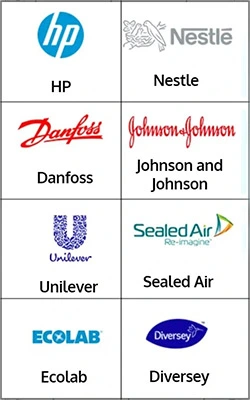
Get in Touch With Us
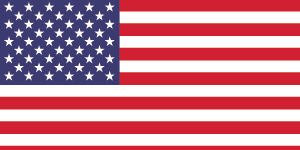
UNITED STATES
Phone:+1 307 363 1045
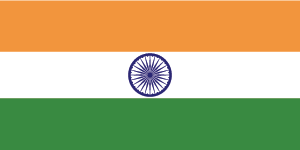
INDIA
Phone: +91 8850629517
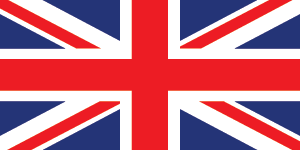
UNITED KINGDOM
Phone: +44 7537 171117
Email: sales@procurementresource.com

